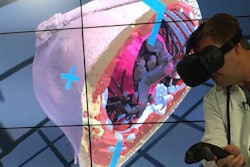Epidural metastases are most often found on MRI when cancer patients are symptomatic, but asymptomatic cancer patients are usually followed with CT for surveillance, according to Dr. Lauren Kim from the U.S. National Institutes of Health.
"Our previous work on this topic (RSNA 2015) demonstrated that radiologists commonly do not report plainly evident epidural metastases on CT examinations performed for the purposes of metastatic cancer surveillance, a finding which prompted our investigation as to why these lesions are commonly overlooked," she told AuntMinnie.com.
This study used a RIS search to identify patients diagnosed with an epidural metastasis on MRI who had also recently undergone CT. The researchers characterized the imaging features of 319 epidural metastases on CT over a 12-year period, looking for better ways to visualize them and improve detection.
The quantitative image analysis included features such as 3D volume, spine level (thoracic versus lumbar), display slice thickness, number of slices displayed, percent spinal canal stenosis, and several other measures that will be detailed in the presentation.
"Our study suggests that magnified views of the spine on soft-tissue-range window settings may optimize visualization, and thereby detection, of epidural metastases on CT," the group concluded.



















